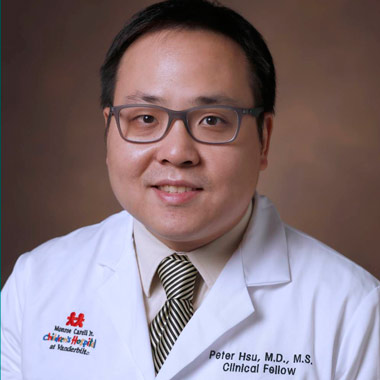Adolescent and young adult (AYA) cancer patients are at great risk for high-cost out-of-network care and high drug costs due, in part to changes made by insurers in response to the implementation of the Affordable Care Act (ACA).
Researchers in the Division of Pediatric Hematology-Oncology and Department of Health Policy at Vanderbilt University Medical Center argue in a recent commentary in JAMA Oncology that plans with narrow health care networks that exclude high-cost facilities, and a lack of transparency in cancer treatment drug prices, are placing an already vulnerable population at even higher risk.
“Network transparency and our ability as well as willingness to facilitate AYA cancer patients in making informed decisions for picking the right insurance plans for themselves will be key in solving this problem,” said Peter Hsu, M.D., clinical fellow in the Division of Pediatric Hematology-Oncology at Vanderbilt.
ACA Reduces Uninsured Rate but Insurers Narrow Care Options
AYAs between the ages of 15 and 39 are considered a vulnerable population by the National Cancer Institute, with the group having a higher uninsured rate than the general population, lower participation in clinical trials, delayed diagnosis and lower rates of follow-up. The improvement of cancer survival rates for AYAs has lagged behind that of older populations. Since the ACA was enacted in 2010, the uninsured rate of AYAs has dropped substantially – from 26 to 14 percent – but insurers have adjusted plans in ways that make it difficult or even impossible for AYA cancer patients to access the best possible care.
Private health insurance plans have increasingly narrowed their networks on the marketplaces created by the ACA. Those plans are more likely to exclude high-cost facilities, which are often academic medical centers and comprehensive cancer centers, where clinical trials take place and physicians are more familiar with both pediatric and adult oncology treatment protocols and guidelines.
Vanderbilt researchers found that a majority of private marketplace plans have no out-of-network oncology coverage, forcing patients to pay completely out-of-pocket should they want access to that care. “This is one of the leading financial toxicities for AYA oncology patients,” Hsu said.
High Drug Costs Can Be Crippling for Cancer Patients
The cost of antineoplastics – drugs used to treat cancer – have also remained on the highest pricing tiers since the implementation of the ACA. Cancer patients with high-deductible plans are at particular financial risk. Cost-sharing information for oral antineoplastics is required to be provided on the marketplace websites, but actual pricing has not always matched what is online. Many antineoplastics are administered non-orally as well, which makes them a medical rather than prescription drug benefit, further reducing the amount of cost-sharing information available.
Guidelines that assess the adequacy of an insurance plan’s network have also failed to protect cancer patients. Currently, network standards that require certain levels of access to high-volume and high-effect specialists do not explicitly mandate that oncologic care be included. A re-evaluation of how cancer treatment is included in insurance plans is needed, especially for the AYA population, Vanderbilt researchers said, and plans should be easier for the consumer to understand, with designs on transparent health care networks, tiered drug formularies and cost-to-benefit ratios that are easier to understand.
“This re-evaluation is not only crucial for our AYA oncology patients, but our health economy as a whole,” Hsu said.






